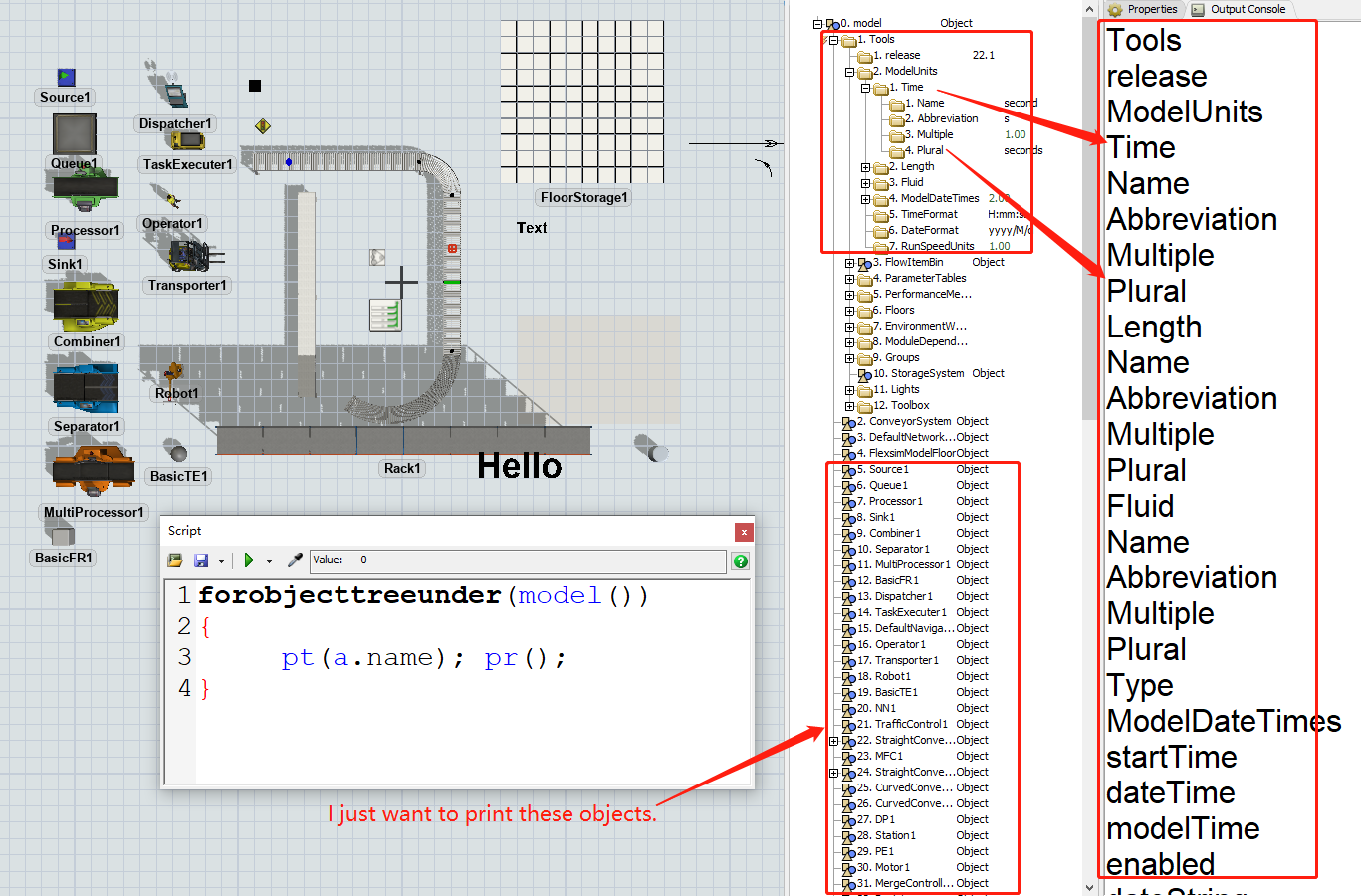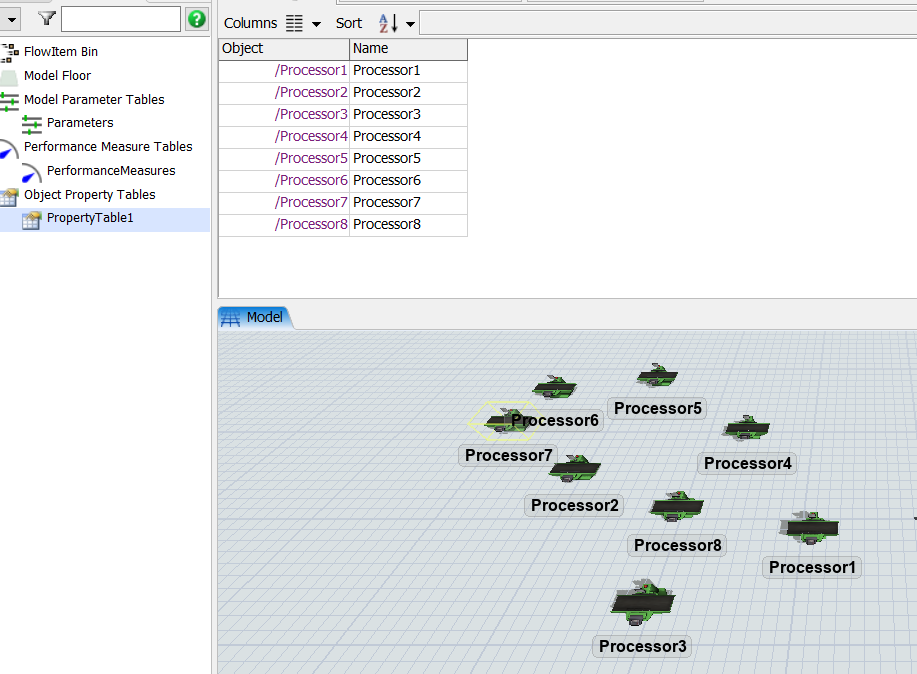When I use forobjecttreeunder Command, it lists all subnode's name under Model.
- forobjecttreeunder(model())
- {
- pt(a.name); pr();
- }
It's a little bit confusion in the lastest version cause all subnodes in tool are printed as well.
How to list only user-created objects?
I tried the following code:
- forobjecttreeunder(model())
- {
- if(isclasstype(a,CLASSTYPE_FLEXSIMOBJECT))
- print(a.name);
- }
but the list still shows some objects that were not created by me.
Is there a good way to list only user-created objects in the model?
How to list only user-created objects in the model_v2022.1.fsm



